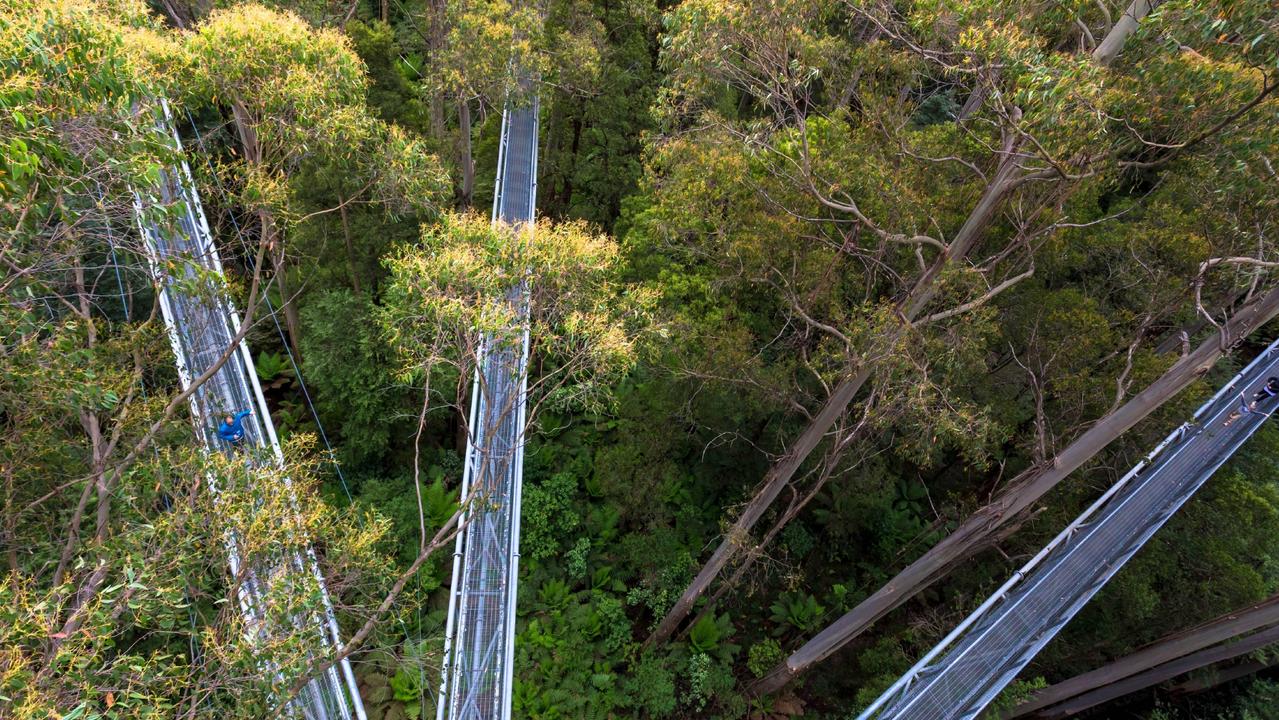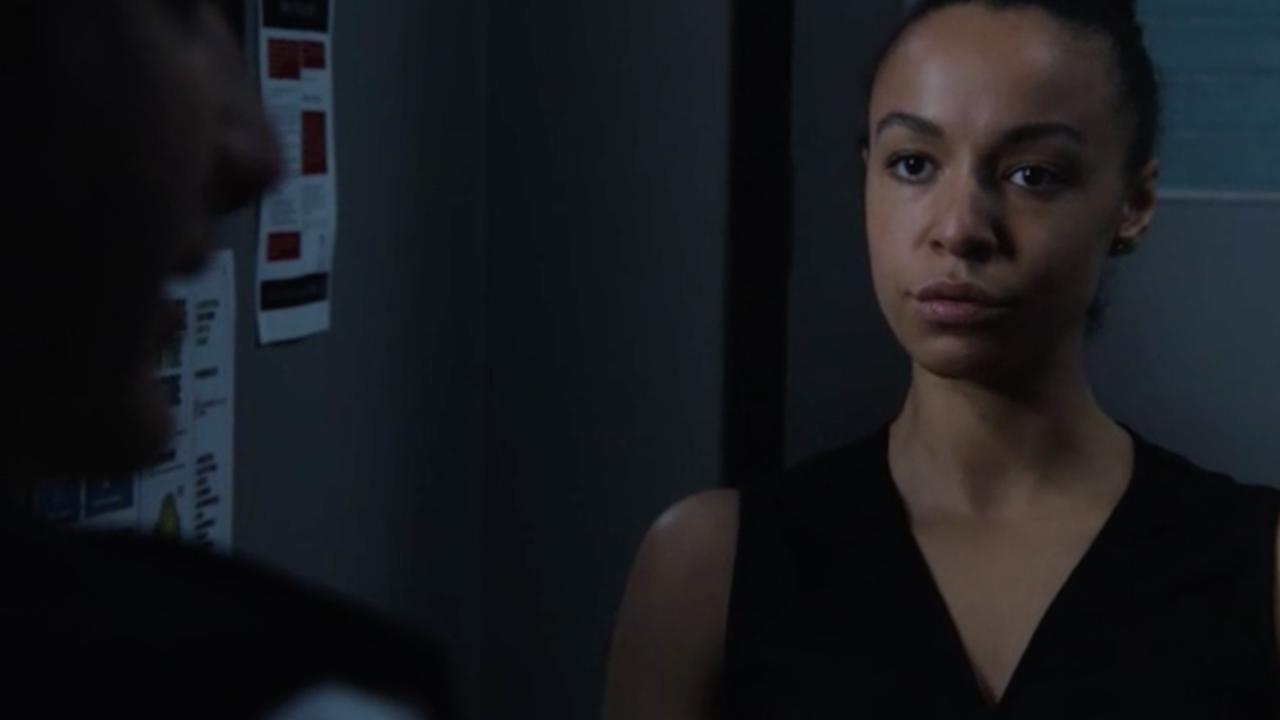Victoria’s wine region filled with little-known gems
VICTORIA’S wine regions are filled with amazing wineries you may not know about. Mornington, tick. Yarra Valley, of course. But what about Henty and Heathcote and the Pyrenees?

Best of Melbourne
Don't miss out on the headlines from Best of Melbourne. Followed categories will be added to My News.
VICTORIA’S wine regions are filled with little-known gems, as Dan Stock discovers
Mornington, tick. Yarra Valley, of course. But what about the Upper Goulburn Valley or Geelong? How about Henty and Heathcote and the Pyrenees?
There are few people unfamiliar with Mornington chardonnay, or Yarra Valley pinot, but with
3000 vineyards that 800 wineries across the state transform into wine, Victoria’s wine industry is incredibly diverse in geography and geology, with climates – and micro climates – suited to a huge array of grapes that create a suite of regionally expressive and impressive wines.
According to industry body Wine Victoria, there are more than 1.5 million winery visits annually across the state, with Victorian cellar doors – found right across the state’s 21 designated wine regions - making up two-thirds of all cellar doors in the country.
So next time you’re thinking of heading out on a grape escape, here are four of our lesser-known, but no less impressive, wine areas that are worth getting to know.
BEECHWORTH
“Beechworth, potentially, is one of the really great wine areas of Australia. And I believe in 100 years it will be recognised as such,” says Julian Castagna, who has been making wines on his family owned vineyard since 1997.
“For a region that’s as small as us, people will argue but potentially we have great chardonnay, great sangiovese, great shiraz and pretty interesting viognier,” he says. “It’s something that doesn’t exist elsewhere that I know in Australia across that board.”
Beechworth is home to one of Australia’s great chardonnay vineyards, Giaconda, and it was through Giaconda’s Rick Kinzbrunner that Julian first came to know the region.

A film director by first trade, Julian turned his lifelong passion for wine into a tree-changing profession and was drawn to Giaconda’s wines for their European characters. “They are medium-bodied elegant wines to be shared with food,” Julian says, qualities he strives for with his Castagna wines. “So I got to know Beechworth through sharing wine with Rick.”
On his nine-acre vineyard that produces about 2000 cases a year, syrah (shiraz) and sangiovese are the flagship varietals, with son Adam also producing wines under the Adam’s Rib label.
“Beechworth is a unique piece of terroir, in that it looks like a top hat, the way it got lifted up all those millions of years ago. Because the land is so rocky, there’s minerality, a quartz quality that transfers to the wine when treated correctly,” Julian says.
That results in shiraz that he describes as “fresh and medium bodied, with great complexity”.
“Wines from here have fineness, an almost Burgundian quality. I often describe shiraz from Beechworth as Burgundy made from shiraz, it has a pinot character.”
The Beechworth vignerons society holds an annual spring tasting showcasing the region’s 30-odd wineries.
“In the past five years, a whole lot of young people who have been making wines elsewhere have come up here (to make wine) recognising the quality.”

MACEDON
Liam O’Brien and Matt Brooks are the Athletes of Wine, “two hard-training sommeliers” who turned their hands to tending a plot of Macedon Ranges vines in 2007.
“I always had an interest, if not a fantasy, of being a man of the land,” Liam says. “It was a chance to learn the reality of winemaking, outside the romance. It was good to get out of the city, good to get outside, do some physical labour and not be so nocturnal, as you can be (working) in restaurants.”
Those early experiments in growing grapes has transformed hobby into fledging business making wines from the coldest mainland wine region – only parts of Tasmania grow grapes in a colder environment.

This cold climate means the Macedon region has obvious strengths in sparkling wine – which needs the cold to keep acid levels high in the grapes – pinot noir and chardonnay.
Wine writer Nick Stock says the region has a gift for producing fragrant, aromatic and racy white wines and impressive pinot noir. “The ultra-cool climate also breeds impressive ageing potential into the wines,” he says.
Macedon tends to produce pinot with a red cherry spectrum of flavours, Liam says, with more connection between fruit, acidity, mid-palate weight and back palate tannins.
“Warmer sites in Victoria can produce what people call a tadpole wine, a big head (of fruit flavour) and just tails away quite quickly,” he says.
The two standout leaders of the region are Bindi and Curly Flat, which produce outstanding pinot and chardonnays, with Sentio, Lyons Will and Silent Way up-and-coming small producers Liam suggests checking out.

PYRENEES
“It’s a region that does a lot of styles well,” says Simon McShane of Blue Pyrenees in Avoca.
“The thing about the area, we don’t have big car parks for buses like Yarra (Valley) or Mornington. You may have to drive up a dirt road, and step over a dog to meet the winemaker, but I’d describe this as an authentic wine region. We offer a more authentic experience.”
As the first winery in the region, planted in the 1960s in a joint venture with French producer Remy Martin, that authenticity at Blue Pyrenees is steeped in history. Originally planted for grapes to make brandy, the French quickly realised it was a region suited to make premium sparkling and tables wines.
The area was chosen as it was the coolest climate that could successfully grow grapes in an old gold mining area. “The only other place was Pemberton in WA,” Simon says. “When Chateau Remy (which became Blue Pyrenees in 1982) was planted in 1963, it was the first cool climate wine production.”
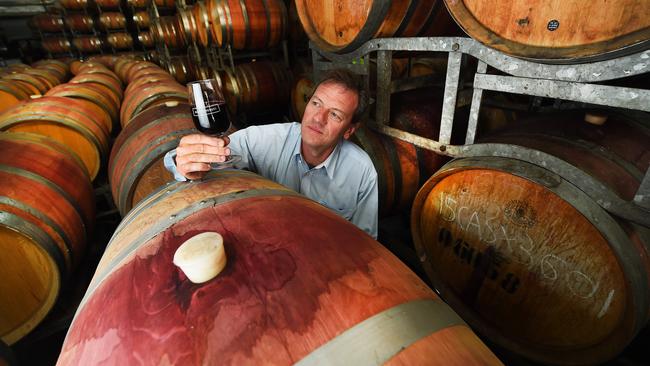
That cool climate – and the eucalyptus trees from which the winery takes its name, shimmering blue in the afternoon sun – creates wines with the unmistakeable stamp of mint and spice characters in shiraz and cabernet.
“Grampians shiraz has black pepper characters, Yarra Valley/cool climate shiraz has white pepper,” Simon says. “Pyrenees tends to have spice characters: cardamom, cinnamon, cracked pepper spices.”
Led by chief winemaker Andrew Koerner, Blue Pyrenees is unique in its production of award-winning white (a viognier, marsanne, roussane Rhone-style blend), reds (shiraz and a cabernet blend) and sparkling wine (midnight cuvee).
“We can’t think of any other vineyard anywhere that does similar. They are usually good at one or two but not all three,” Simon says. “The rocky soils self-regulate the vines. We benefited from the French experience.”
Other wineries from the region to look out for include Dalwhinnie, Summerfield and Sally’s Paddock in Moonambel in the north, Dog Rock in the south and Mount Avoca in Avoca.
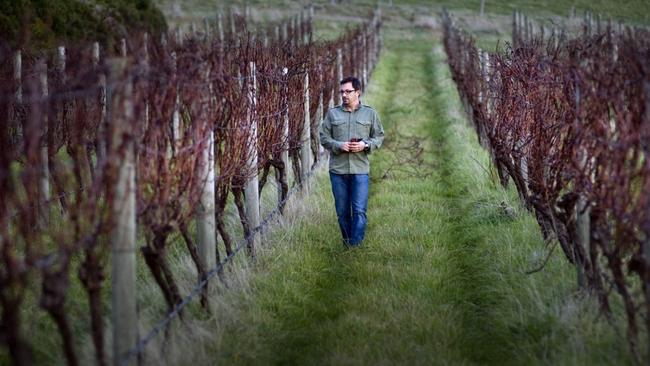
GIPPSLAND
Arguably the most famous wines to come out of Gippsland are from Bass Phillip, the exquisite chardonnay and pinot noir Phillip Jones crafts from his vineyard in Leongatha. But to think of such a huge region as one is a mistake, says winemaker Marcus Satchell of Dirty Three wines.
“It becomes difficult to define what that means. So whenever I talk about Gippsland I only ever really talk about the patch of dirt I understand and that’s south Gippsland, which is now synonymous with growing fantastic pinot noir,” he says. “The climate primarily lends itself to high-end pinot.”
Dirty Three is a winemaking project of Marcus along with Cam Mackenzie and Stuart Gregor of Four Pillars gin in Healesville. Winemaking mates who worked together in the Yarra Valley, Cam wanted to start a pinot project at the same time Marcus was looking to move his young family to Gippsland. “The two fell into place,” Marcus says.
Along with pinot, the trio also makes a riesling (“inspired by the Mosel and Alsace, an off-dry style”) that’s also suited to the cool climate that Marcus likens to parts of Tasmania. It’s this cool climate that creates wines of depth, especially pinot.
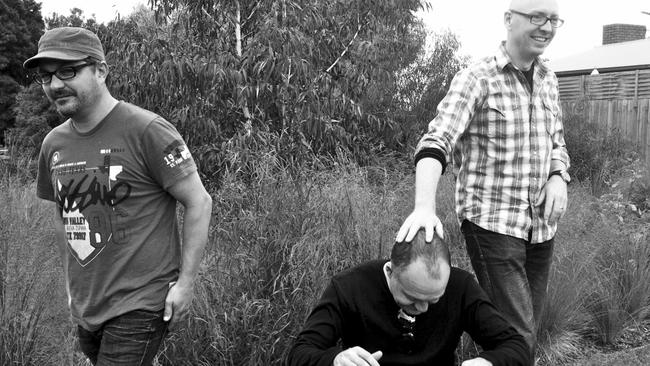
“There’s a taste of south Gippsland. My experience is that we tend to make deeper, mid-palate heavy wines, compared with the Yarra Valley. I see an extra level of complexity, a mushroomy, undergrowth character I see in south Gippsland pinot that I don’t see in most other mainland pinot regions.”
With such diverse geography across a large region, Marcus says many Gippsland wineries are small, cellar-door only businesses that mean much of the public are unfamiliar with the wines of the region.
“There’s some fantastic aromatic whites, pinot gris and whites in the similar family. In the warmer sites, near Phillip Island, some lovely shiraz, cabernet, merlot.”
Purple Hen from Phillip Island has had consistent success since its inception and is worth seeking out, Marcus says, along with the biggest player of the region, Lightfoot & Sons in East Gippsland, for its “well-priced, good-quality wines”.
VICTORIA’S 21 WINE REGIONS
Alpine Valleys; Beechworth; Bendigo; Geelong; Gippsland; Glenrowan; Goulburn Valley; Grampians; Heathcote; Henty; King Valley; Macedon Ranges; Mildura Murray Darling; Mornington Peninsula; Pyrenees; Rutherglen; Strathbogies; Sunbury; North West Victoria; Upper Goulburn Valley; Yarra Valley
CITY CELLAR EVENT
There’s only one thing better than a weekend spent visiting cellar doors around the state, and that’s having cellar doors around the state come to you. Head down to the lawns by the Yarra at South Wharf for the City Cellar, where 60 of Victoria’s best wineries – including Dirty Three, Castagna, Blue Pyrenees and Athletes of Wine - will be on hand to pour sips to savour and fill glasses with all good things grape. The huge diversity of our acclaimed wine industry will be on show over the opening weekend of the festival. Meet winemakers and discover your new favourite drop while snacking on food from top winery restaurants including Mitchelton, Yabby Lake and All Saints Estate.
March 4 from 5pm; March 5-6 from noon at Melbourne Exhibition Centre Lawn, South Wharf. Tickets, $55. The City Cellar is part of the Melbourne Food and Wine Festival opening weekend River Graze, which transforms the Yarra into a food and wine hot spot with free events for the whole family.
For more information:MWFW.com.au

